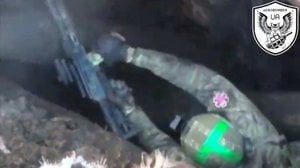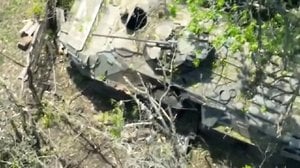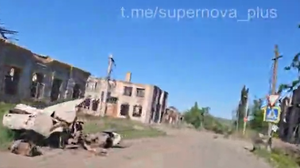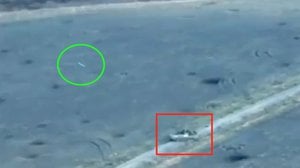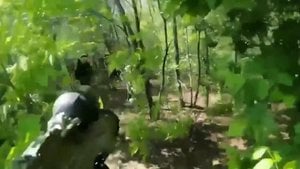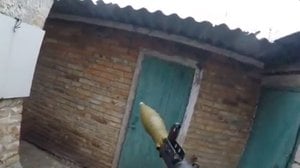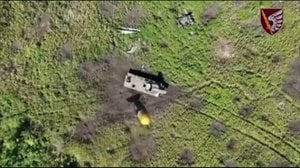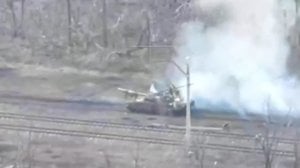
Artillery Dismembers Russian Compound
Published 1 years ago
Lengthy drone footage from the K-2 battalion of Ukrainian artillery dismembering a Russian compound. The drone loiters over a rear-area position – there are no trenches or fighting positions visible. One cargo truck enters the frame at the start of the video, and later another truck, a BTR, and several SUVs can be seen. The artillery shell appears to be conventional high-explosive shells fired singly. As rounds begin to land, Russian soldiers scurry from one building to another. Almost mid-way through the video, the drone operator spots a mortar position and directs an artillery round near it. Another artillery round sets fire to a truck. Towards the end of the video the operator identifies yet another mortar position. The first round disturbs the camouflage netting to reveal the gun pit, and a subsequent round destroys the gone position altogether.
This footage demonstrates an evolution in the employment of indirect fires. Traditionally an observer would spot a target and call for fire. The firing agency (artillery battery or mortar platoon) fires one round at a time, and after each impact the observer submits corrections to adjust the impact of the rounds. Once effects on target are observed, the observer calls for a “fire for effect,” a barrage from all the guns in the battery or mortar platoon. The traditional role of artillery and mortars in U.S. doctrine is to suppress or neutralize enemy units to facilitate maneuver, or to suppress enemy air defenses in order to allow fixed or rotary wing close air support to destroy harder targets.
In this footage the drone plays the role of the observer, and rather than calling in adjustment rounds and then a fire for effect, rounds are directed to various locations around the compound to destroy specific assets located within the enemy position. This is a more precise and efficient method of employing artillery, reducing the amount of ammunition consumed as well as the wear on barrels and other gun components.
This is also not the suppression of units or positions to facilitate maneuver, but an operation to neutralize assets located in the rear to erode the fighting capabilities of Russian units located in forward positions. The Ukrainians continue to excel at this type of interdiction campaign and are relying on this approach to disrupt the fighting ability and cohesion of Russian units. It will be interesting to see if cumulative effects of approach results in a breakthrough.
About the Author

Cam
Cam served as an infantry officer in the Marine Corps, deploying to the Horn of Africa and participating in combat operations in Iraq. He currently works in the maritime industry and in the defense sector as an instructor of combined arms planning and operations. An avid sailor, Cam founded and directs a nonprofit that supports veterans and first responders through sailing.


